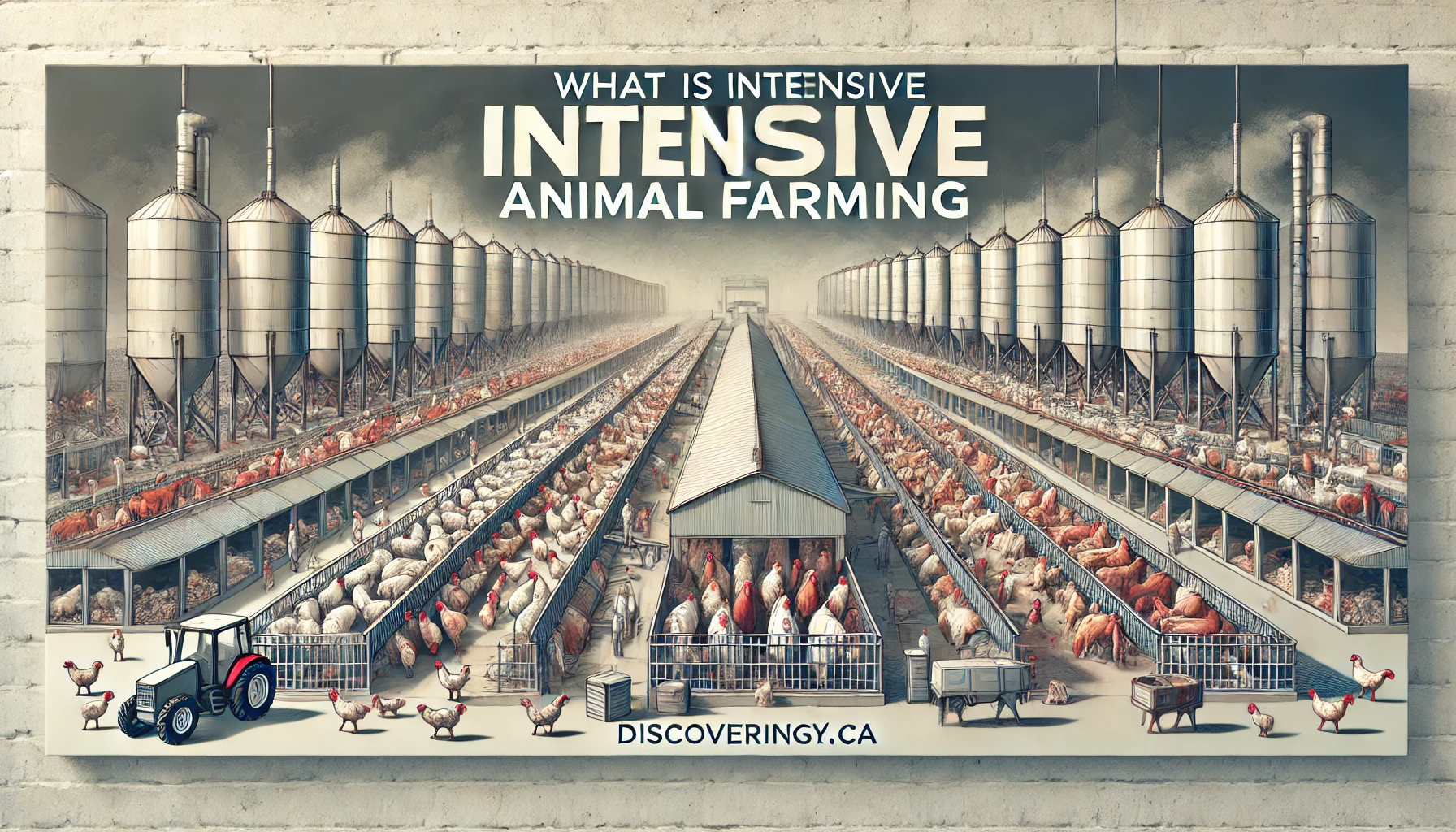What Is Intensive Animal Farming? A Comprehensive Guide to Modern Livestock Production
Intensive animal farming, also known as factory farming or industrial livestock production, is a highly mechanized and large-scale approach to raising animals for food production. The primary goal of intensive farming is to maximize productivity, often involving high-density animal populations, specialized feeds, and controlled environments to boost yields and meet growing consumer demand for meat, dairy, and eggs. However, this farming method brings significant implications for animal welfare, the environment, and public health, sparking widespread debate among consumers, environmentalists, and the agricultural industry.
1. Definition of Intensive Animal Farming
Intensive animal farming is characterized by:
- High Animal Density: Raising large numbers of animals in confined spaces.
- Specialized Feeding Regimens: Using optimized feeds to accelerate animal growth.
- Controlled Environments: Often climate-controlled facilities to increase productivity year-round.
- Industrial Methods: Mechanized processes for feeding, waste management, and even health treatments.
The purpose of intensive farming is to produce animal products like meat, milk, and eggs in large volumes, efficiently meeting demand but often at the cost of natural animal behavior and environment.
2. The Origins and Rise of Intensive Animal Farming
The practice of intensive farming emerged in the 20th century in response to increasing consumer demand for affordable protein and the desire to improve agricultural efficiency. Technological advancements, along with the use of antibiotics and specialized feeds, allowed farmers to keep animals in smaller spaces, reducing the land and resources required per animal. The result has been a significant increase in food production, but also ethical and environmental concerns.
3. Common Types of Intensive Animal Farming Systems
Different systems exist depending on the animals and products being raised:
- Poultry Farming: Chickens are raised in high-density environments for meat (broilers) and egg production (layers), often in small, stacked cages or large barns.
- Pork Production: Pigs are housed in large barns or “sow crates,” minimizing movement to maximize growth rates and meat yield.
- Cattle Feedlots: Cows are fed calorie-dense diets in feedlots to accelerate weight gain before slaughter.
- Dairy Farming: Dairy cows are often kept in confined stalls and fed special diets to increase milk production.
4. Techniques and Practices in Intensive Animal Farming
The production methods in intensive farming focus on high efficiency:
- Genetic Selection: Animals are selectively bred to enhance traits like growth rate, size, and milk or egg yield.
- Controlled Feeding: Feed is often specially formulated with nutrients and supplements to maximize growth in the shortest time.
- Limited Mobility: Animals are often kept in confined spaces to minimize energy expenditure and increase weight gain.
- Automated Systems: Feeding, watering, and waste removal are largely automated to reduce labor costs.
- Use of Antibiotics and Hormones: In some systems, antibiotics are used to prevent disease in close quarters, while growth hormones may be administered to promote faster growth.
5. Benefits of Intensive Animal Farming
While controversial, intensive farming has led to some notable benefits:
- Increased Food Production: Intensive farming allows high-volume production, meeting demand and stabilizing food supply.
- Lower Costs: Higher efficiency in food production leads to lower consumer costs for meat, dairy, and eggs.
- Efficient Land Use: By confining animals, less land is needed compared to extensive, pasture-based systems.
- Job Creation: Intensive farming creates jobs in both agriculture and related industries like processing, transportation, and veterinary care.
6. Concerns and Criticisms of Intensive Animal Farming
Despite its benefits, intensive farming is associated with significant issues:
Animal Welfare:
- Animals often experience stress, limited movement, and lack of natural behaviors.
- Practices such as beak trimming in poultry and tail docking in pigs aim to reduce harm but also raise welfare concerns.
Environmental Impact:
- High greenhouse gas emissions, particularly methane from cattle.
- Intensive farms generate large amounts of waste that can pollute water systems and soil.
Health Risks:
- Antibiotic use in farming raises concerns about antibiotic resistance, posing public health risks.
- Intensive farming can lead to the spread of diseases among animals, some of which may transfer to humans.
7. Environmental Effects of Intensive Animal Farming
Intensive farming is one of the largest contributors to environmental degradation:
- Water Pollution: Animal waste and runoff from fertilizers used in feed production contaminate waterways, causing issues like algal blooms.
- Deforestation: Land clearing for feed crops, such as soy, contributes to deforestation in areas like the Amazon.
- Greenhouse Gas Emissions: The industry is a major source of methane and nitrous oxide, potent greenhouse gases contributing to climate change.
8. Animal Welfare in Intensive Farming
Due to their confined environments, animals in intensive systems often face welfare challenges:
- Restricted Movement: Many animals spend their lives in confined cages, unable to exhibit natural behaviors.
- Physical Modifications: To prevent injuries in close quarters, animals undergo modifications like dehorning or tail docking, often without anesthetics.
- Behavioral Stress: Confinement and high-density living can lead to stress and aggressive behaviors among animals.
9. Public Health Concerns
The use of antibiotics to prevent disease in overcrowded environments has raised serious public health issues:
- Antibiotic Resistance: Regular antibiotic use in livestock can contribute to antibiotic-resistant bacteria, a major health threat worldwide.
- Disease Transmission: High-density environments can increase the likelihood of diseases that may spread to humans, including zoonotic diseases.
10. Alternatives to Intensive Animal Farming
With rising concerns over intensive farming, alternative approaches are gaining popularity:
- Pasture-Raised and Free-Range Systems: These allow animals to graze freely, offering more natural living conditions.
- Organic Farming: This method focuses on natural feeds, no antibiotics, and better welfare standards.
- Vertical and Urban Farming: Though more common with plants, some vertical farms now incorporate livestock in urban areas to reduce environmental impact.
11. Regulatory and Ethical Considerations
Many countries have introduced guidelines to mitigate the downsides of intensive farming, such as:
- Animal Welfare Laws: Regulations limiting confinement times, banning certain practices, or mandating humane slaughter methods.
- Environmental Protections: Requirements for waste management, greenhouse gas reduction, and pollutant monitoring.
- Public Awareness Campaigns: Efforts to educate consumers on sustainable and ethical food choices.
12. The Future of Intensive Animal Farming
The future of intensive farming will likely involve balancing efficiency with ethical and environmental standards. Innovations in animal-free alternatives, like lab-grown meat and plant-based substitutes, present new ways to meet food demands without the ethical and environmental challenges of traditional farming.
Conclusion
Intensive animal farming remains a cornerstone of the global food system, delivering high-volume production to meet demand. However, its practices come with significant costs to animal welfare, environmental health, and potentially human health. As consumers become more aware of these impacts, the industry may shift toward more sustainable and ethical practices, seeking a middle ground that respects both the need for efficiency and the value of responsible agriculture.
Frequently Asked Questions
- What is intensive animal farming?
- It’s a method of raising animals in high-density, controlled environments to maximize production of meat, eggs, and dairy.
- Why is intensive farming controversial?
- It raises concerns due to its impacts on animal welfare, environmental sustainability, and public health.
- Is intensive farming harmful to the environment?
- Yes, it contributes to greenhouse gas emissions, water pollution, and deforestation.
- Are there alternatives to intensive animal farming?
- Yes, options include pasture-raised, organic, and free-range systems, as well as plant-based and lab-grown meats.
- Can intensive farming practices be improved?
- Through regulations, innovations in animal welfare, and sustainable practices, the industry can reduce some of its negative impacts.
For more insights into agricultural practices and sustainable solutions, explore Discoveringly.






